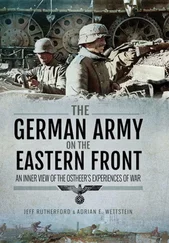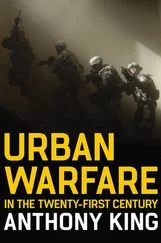Kuznetsov elected to mount a set-piece attack on the German defence in Slavyansk on the morning of 2 February, but only had the 195th Rifle Division nearby. Not only were the initial attacks by this division repelled by von Funck’s Panzergrenadiers, but the 7.Panzer-Division mounted a counter-attack with tanks on 3 February that threw the Soviet infantrymen out of the city suburbs. Kuznetsov thought he could pry the 7.Panzer-Division out of Slavyansk with a little extra firepower, so he requested Popov to bring up the 3rd Tank Corps while 1GA brought up the 57th Guards Rifle Division. Poluboyarov’s 4GTC formed a defensive hedgehog at Kramatorsk, but took no active role. By 5 February, von Funck’s 7.Panzer-Division was nearly encircled in Slavyansk and it looked grim for Heeresgruppe Don, since there was now a huge gap between Armee-Abteilung Lanz and Breith’s III. Panzerkorps. There was literally nothing to block the 6th Army or Popov’s armour from pushing west and south to sever von Manstein’s lines of communication. However, like the Chateau de Hougoumont at Waterloo in 1815, capturing Slavyansk became an object in itself and Vatutin, Kuznetsov and Popov lost sight of the real objective at a critical moment. Rather than simply bypassing Slavyansk, Vatutin decided to commit the bulk of Popov’s armour to reducing the German hedgehog in the city.
Popov was able to attack the 7.Panzer-Division’s hedgehog with three of his tank corps, along with the infantry of 4GRC, from three different directions and almost completely encircle the division, but the city did not fall and fighting went on for more than a week. Given the fact that Breith had relatively few tanks and only modest amounts of infantry and artillery, the stand at Slavyansk against the bulk of 1GA and Popov’s armour seems improbable. The answer lies in logistics – Vatutin’s frontline units were running out of fuel and ammunition and could not afford a protracted battle. German logistics were somewhat better, since Breith’s panzers were operating close to friendly rail lines. Furthermore, Breith was able to bring up the 3.Panzer-Division to the east of Slavyansk, which engaged the 10th Tank Corps from 3–11 February. The 11.Panzer-Division, with 16 tanks, was brought up from Rostov and sent against the 4GTC at Kramatorsk but was badly ambushed, losing 10 SPWs and many anti-tank guns. {41} Popov sent the 3rd Tank Corps to Kramatorsk to reinforce Poluboyarov, which temporarily halted the German counter-attack. Once the Germans brought up the 333.Infanterie-Division and some artillery, the two Soviet tank corps began to suffer heavy losses. Unsupported tank units tend to perform poorly in an extended defence, particularly in an urban environment. By this point in Operation Gallop, Popov’s armour was not being used as an exploitation force for Deep Operations, nor was it massed against a single objective. Instead, Popov’s four tank corps were dispersed between Kramatorsk, Slavyansk and Lysychansk and half his armour had actually shifted to the defence.
In contrast, the German Panzer-Divisionen were depleted but well-coordinated. Many of the German Pz III, Pz IV tanks and StuG III assault guns involved in the counter-attack mounted winterketten (winter tracked extenders), which improved their mobility in snow. By the second winter of the War in the East, German tankers were somewhat better adapted to winter operations, compared to the first winter in which virtually all of their tanks became non-operational. Freezing cold weather still caused problems, particularly with routine maintenance; grease turned nearly solid at temperatures hovering near or below 0 degrees F and road wheels or support rollers without proper lubrication quickly burned out. Although operational readiness rates were poor during the winter battles, by early 1943 the Panzer-Divisionen had learned to keep a portion of their armour running even under the worst weather conditions. Indeed, the ability of the German Panzer-Divisionen to adapt and operate in winter weather conditions in 1943 enabled von Manstein’s mechanized units to slowly regain the initiative. Furthermore, the combined arms nature of the Panzer-Divisionen – in contrast to Soviet tank units – enabled them to substitute mobile Flak guns, Panzerjägers and Pioniers to make up for the shortage of tanks.
Amazingly, the biggest Soviet success in Operation Gallop was achieved by infantry, not tanks. While Popov’s armour and 1GA were tangled up trying to overcome III Panzerkorps’ defence, a handful of rifle divisions from 4GRC marched southwest toward the Dnepr. On 11 February, the 35th Guard Rifle Division captured the important rail junction at Lozovaya. The way to the Dnepr River was open. The 6th Army also had infantry near Zmiyev within 35km of Kharkov. Suddenly, Vatutin realized that a decisive victory was possible and that he needed to extract Popov’s armour from the useless slugfests at Kramatorsk-Slavyansk. He ordered Kuznetsov to shift his axis of attack westward, bypassing Slavyansk for now. Bypassing enemy armour units can be perilous since its leaves a mobile threat on one’s flanks, but Vatutin was buoyed by the Stavka’s overly-optimistic assessment that Heeresgruppe Don was withdrawing westward and the desperate stand at Slavyansk was merely a rearguard action. {42}
For their part, 1.Panzerarmee believed that Group Popov could not get around their open left flank south of Kramatorsk because of the numerous Balkas (ravines) filled with deep snow; the Germans regarded this area as impossible for their tanks. {43} However, the Soviet tankers did not share this view. Late on the night of 10–11 February, Poluboyarov pulled his 4GTC out of Kramatorsk, bypassed the 11.Panzer-Division’s left flank and boldly conducted an 85km night march through the bleak and snowy wasteland. At 0900 hours the next morning, his tanks seized the rail junction at Krasnoarmeyskoye and cut Heeresgruppe Don’s primary line of communication. [9]Although there was a secondary route to the south through the Zaporozhe to Mariupol line, the loss of Krasnoarmeyskoye was a serious threat to von Manstein’s forces because it immediately delayed the timely arrival of fuel and ammunition. In order to reinforce success, Vatutin sent Poluboyarov the 9th Guards Tank Brigade and ski troops and told him to hang on, employing 4GTC as a blocking force. Von Manstein reacted at once, ordering the III and XXXX Panzerkorps to launch immediate counter-attacks to defeat Popov’s enveloping manoeuvre. The SS-Panzergrenadier-Division Wiking , fresh from the Caucasus, was sent to destroy 4GTC, while the 7. and 11.Panzer-Divisionen went after the 10th Tank Corps, still near Slavyansk. Initially, the German attacks achieved little, due to the difficulty of manoeuvreing through deep snow and inadequate support. Poluboyarov had deployed anti-tank guns and anti-aircraft guns firing in direct fire mode to slow the German advance. On 12 February, one Kampfgruppe from Wiking fought its way into Krasnoarmeyskoye, but the action devolved into a week-long battle of attrition, rather than one of rapid manoeuvre. {44} On 15 February, Gruppe Hollidt was finally forced to abandon Voroshilovgrad as part of the retreat to the Mius River and Slavyansk was ceded two days later, but the German defence along the Donets had wrecked Vatutin’s timetable for Gallop.
On 17 February, the stalwart 35th Guards Rifle Division captured the town of Pavlograd, only 55km from the Dnepr River. Shortly afterwards, Vatutin committed his last front reserves – General-major Petr P. Pavlov’s 25th Tank Corps and the 1st Guards Cavalry Corps – to reinforce the 6th Army’s push to the Dnepr. By 18 February, Pavlov’s tankers captured Sinel’nikovo, just 32km from the Dnepr. Apparently on the verge of a major victory, Vatutin did not realize that his offensive had already culminated and that the Germans were gaining the advantage. Popov’s four tank corps were all virtually immobilized, very low on fuel, food and ammunition, and no longer capable of offensive action.
Читать дальше
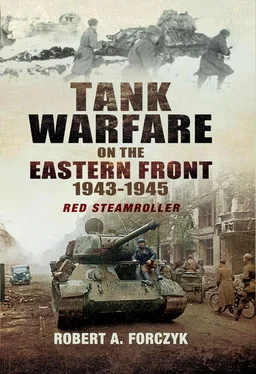


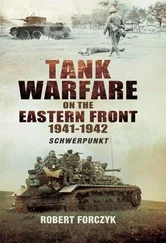
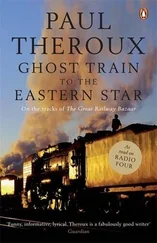
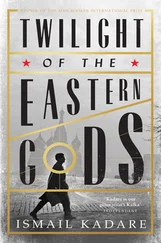
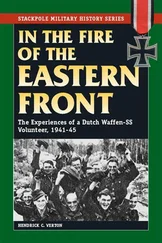

![John Stieber - Against the Odds - Survival on the Russian Front 1944-1945 [2nd Edition]](/books/405234/john-stieber-against-the-odds-survival-on-the-russian-front-1944-1945-2nd-edition-thumb.webp)

